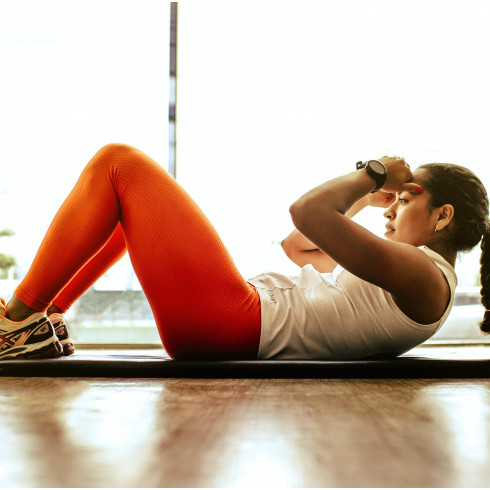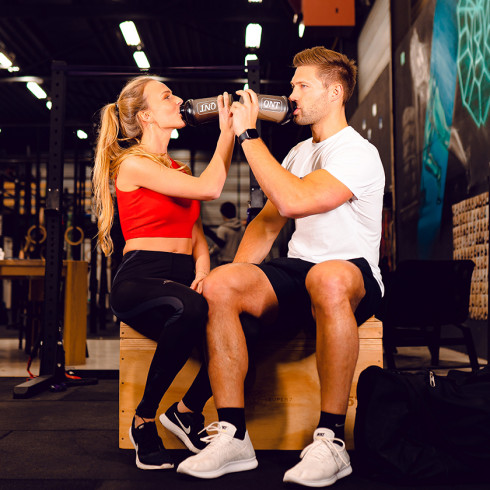Getting Started with a Marathon: Tips and Preparation for the Brussels 20KM
TABLE OF CONTENTS
RUNNING 20 KM: A REAL CHALLENGE!
1. UNDERSTANDING THE 20 KM OF BRUSSELS
The 20 KM of Brussels is not a full marathon, but it’s still a major challenge. This event attracts participants of all levels and features a varied route, mixing urban roads and green areas, with several demanding hills.
2. TRAINING FUNDAMENTALS
Success depends on a well-structured physical preparation. Here are the key foundations for an effective training plan:
a. Progressive training
Start slowly and increase your running time week by week. Aim to reach 16 to 18 km during training before race day. Advanced runners may focus on speed and endurance gains.
b. Specific workouts
Incorporate intervals and hill sessions into your routine. These help strengthen muscles and build the endurance needed for a hilly course like Brussels.
c. Recovery
Rest is just as crucial as training. Include stretching, massages, or cold baths to enhance muscle recovery and reduce injury risk.
3. THE IMPORTANCE OF NUTRITION
a. Before training
Eat complex carbs to ensure long-lasting energy. A small snack like a banana can be ideal pre-run.
b. During training
Use isotonic drinks or energy gels to maintain your energy levels. Hydrate regularly—especially in warmer weather.
c. On race day
Have a light, carb-rich breakfast that’s easy to digest. Don’t drink too much water just before the start, but make sure you're properly hydrated beforehand.
4. ESSENTIAL GEAR
a. Running shoes
Pick comfortable shoes adapted to your gait. Test them well before race day to avoid surprises.
b. Technical clothing
Wear breathable fabrics that wick away sweat. Avoid cotton, which can cause chafing.
c. Practical accessories
Use a GPS watch, armband, or running app—whatever helps you stay on pace without distraction.
5. MENTAL STRATEGIES FOR SUCCESS
a. Set realistic goals
Whether it’s finishing without walking, achieving a time goal, or simply enjoying the race—set a goal that motivates you.
b. Visualize your success
Picture yourself crossing the finish line with pride. Mental imagery boosts motivation and confidence.
c. Stay positive
Focus on how far you've come. Don’t let fatigue take over—breathe, smile, and keep going.
6. RACE DAY: HOW TO MANAGE YOUR RUN
Wake up early, eat light, and arrive ahead of time to stay calm. Warm up with some dynamic stretching. Don’t start too fast—find your rhythm and enjoy the energy of the event. Crowd support makes a big difference!
The 20 KM of Brussels is much more than just a race—it's a personal challenge and an opportunity to push your limits. With the right physical and mental preparation, proper nutrition, and the right gear, you'll be ready to take on this demanding course. Follow these tips, set clear goals, and be ready to enjoy every step of this rewarding experience. Good luck and make the most of the adventure!
DIFFERENCES BETWEEN A MARATHON AND A 20 KM RACE
Of course! While the 20 KM of Brussels and a marathon may seem like similar endurance events, they require different preparation approaches due to their specific demands. Here are the main differences in how to prepare for each race:
1. DISTANCE AND RACE GOALS
20 KM of Brussels: This race is relatively short compared to a marathon. The goal is to cover 20 km, which allows for a faster pace. Runners may aim for a good time or simply enjoy completing the event.
Marathon: A marathon covers 42.195 km—a much longer distance. Most participants aim to finish the race, while others seek to improve their personal best. Energy management becomes essential to avoid exhaustion and injury over the longer duration.
2. TRAINING PLAN
20 KM of Brussels: Training is typically shorter and focuses on medium-range endurance and speed. Runners usually train 3 to 4 times per week with interval sessions, moderate long runs, and recovery runs.
Typical sessions: Hill training, intervals, tempo runs, and long runs up to 15–18 km.
Training goals: Speed and stamina, with emphasis on pace and acceleration.
Marathon: Marathon training is longer and more endurance-focused. Runners often train 4 to 5 times per week, following a phased plan that includes longer runs to build stamina.
Typical sessions: Progressive long runs, moderate-paced base runs, and endurance-focused workouts.
Training goals: Long-distance endurance, pace and energy control, and adaptation to physical fatigue.
3. TRAINING VOLUME
20 KM of Brussels: Training volume is more moderate. There’s no need to run extremely long distances, which allows quicker recovery between sessions. Long runs are usually capped at 16–18 km.
Marathon: Marathoners run much longer distances in training, with sessions reaching 30–35 km toward the end of the plan. Managing fatigue and fueling becomes a core focus week after week.
4. PACE AND ENERGY MANAGEMENT
20 KM of Brussels: Pacing is about maintaining a steady but brisk rhythm. The goal is to balance energy usage to avoid burning out too early. Pace: Runners can afford to go faster since the effort isn’t sustained over several hours.
Marathon: Marathoners need a clear pacing strategy for the long haul. It’s vital not to start too fast and to maintain a pace that can be held over the full distance. Nutrition and hydration management is critical to avoid hitting "the wall"—a sharp drop in energy and performance.
5. NUTRITION AND HYDRATION
20 KM of Brussels: Nutrition needs are simpler since the race lasts 1.5 to 2 hours. Pre- and mid-race hydration is important, especially in warm conditions. Energy bars or a few gels may help, but nutrition is less critical than in a marathon.
Marathon: Nutrition is much more important and must be carefully planned. Marathon runners consume gels, bars, or energy drinks to maintain glucose levels. Pre- and post-race nutrition is also key for proper recovery.
6. RECOVERY STRATEGY
20 KM of Brussels: Recovery focuses on stretching and active rest. Since the distance is shorter, runners can return to training quickly—sometimes the next day or after a few days’ rest.
Marathon: Recovery takes much longer and usually involves several days of full rest. Light walking, hydration, and massage help relieve muscle tension. Post-race nutrition is crucial for repairing muscle damage.
7. MENTAL TRAINING
20 KM of Brussels: The mental challenge lies in managing the effort over roughly two hours. Staying motivated and mentally sharp helps maintain pace and rhythm.
Marathon: Mental preparation is much more demanding. Marathoners must be ready to overcome fatigue, pain, and the temptation to slow down. Strategies like breaking the race into smaller segments and using visualization can be essential.
8. GOALS AND EXPECTATIONS
20 KM of Brussels: Goals vary, but most runners aim to finish with a respectable time. Some target a PB, while others simply want to enjoy the atmosphere and test their speed.
Marathon: Marathon goals are broader—from simply finishing to hitting a personal record. The marathon is a true test of both physical and mental resilience, requiring long-term planning and commitment.
In summary, while both the 20 KM of Brussels and a marathon are long-distance races, they require different training and preparation approaches. The 20 KM demands more work on speed and mid-range endurance, whereas a marathon focuses heavily on long-distance endurance, pace management, and sustained nutritional strategies over several hours. Each race type presents its own challenges, and understanding these differences is essential to tailor your training and successfully achieve your goal.
NUTRITION DURING AN ENDURANCE RACE
Nutrition in the 2 or 3 days before a race—whether it's the 20 km of Brussels or a marathon—is crucial for optimizing your energy reserves and allowing you to perform at your best on race day. The strategies differ slightly depending on the race distance, but the basic principles remain the same. Here’s a guide for pre-race nutrition:
1. INCREASE CARBOHYDRATES (GLYCOGEN LOADING)
During the race, carbohydrates are your primary source of energy. The 2–3 days before the race should therefore focus on "carbohydrate loading," a process that maximizes glycogen reserves in the muscles and liver. This is particularly important for a marathon, but also beneficial for races like the 20 km of Brussels, although the loading may not need to be as intensive.
a. What types of carbohydrates should you choose?
Complex carbohydrates: Choose low-glycemic-index carbohydrates such as pasta, brown rice, potatoes, quinoa, and whole grains. These foods provide a gradual release of energy during the race.
Fruits and vegetables: These are also excellent sources of carbohydrates, as well as vitamins and minerals. Bananas, apples, carrots, broccoli, and spinach are great examples.
Avoid fast sugars: Although simple sugars (like those found in candy or pastries) can offer a quick energy boost, they may also lead to spikes and crashes in blood sugar, which is not ideal for your performance.
b. Carbohydrate quantity
Marathon: Increase your carbohydrate intake to 7–10 g per kilogram of body weight per day in the 2 to 3 days leading up to the race. For example, a person weighing 70 kg should aim for 490 to 700 g of carbohydrates per day.
20 km of Brussels: Carb loading is still important, but you can aim for around 5–7 g of carbohydrates per kilogram of body weight per day. For example, a 70 kg person should aim for about 490 to 700 g of carbohydrates per day.
2. LIMIT FATS AND PROTEINS
Fats: Fats are important for general health, but they are not a quick source of energy during a race. In the 2–3 days before the race, limit saturated fat intake and favor healthy fats like those found in avocados, nuts, and olive oil.
Proteins: While proteins are essential for muscle recovery, there's no need to consume them in excess in the days before the race. You can consume moderate amounts of protein (around 1.2 to 1.6 g per kilogram of body weight per day) to maintain muscle mass, but don’t make it the central focus of your diet.
3. HYDRATION
Hydration is another key factor in the days leading up to a race. Make sure to drink regularly to stay well hydrated, but avoid overdrinking right before the race as this could lead to gastrointestinal discomfort.
2–3 days before the race: Increase your fluid intake, especially water, and consider adding electrolyte drinks if you plan to race in warm conditions. These drinks help maintain a good fluid balance and prevent dehydration.
The night before the race: Keep drinking water, but avoid excessive intake to prevent having an overly full bladder during the race.
4. THE LAST MEAL BEFORE THE RACE
Your last meal before the race, usually the night before, should be rich in carbohydrates and low in fats and fiber to avoid digestive issues. For example:
Meal: Pasta with a light tomato sauce, rice with steamed vegetables, and a lean protein source (like grilled chicken or fish).
Avoid: Foods that are too spicy, fatty, or heavy (e.g., fried foods or fatty meats), which could upset your digestion.
5. BREAKFAST ON RACE DAY
Breakfast is crucial, especially when the race starts early in the morning. Eat about 3 hours before the start to allow your body time to digest.
Choose a light and easy-to-digest meal: A bowl of oatmeal with fruit, a banana with whole-grain bread, or a bagel with a bit of peanut butter are good options.
Avoid heavy or fatty foods: Steer clear of foods like sausages, fried items, or overly sweet foods.
Make sure to hydrate before the start, but don’t overdo it right before the race.
6. AVOID LAST-MINUTE EXPERIMENTS
The 2–3 days before the race are not the time to try new foods or drinks. Stick to foods and meals you’ve already incorporated into your diet and that have worked well for you during training. This reduces the risk of digestive issues on race day.
The 2–3 days before a race are crucial for optimizing your energy reserves and ensuring a strong start. By prioritizing complex carbohydrates, proper hydration, and light meals, you'll maximize your chances of success—whether it's for the 20 km of Brussels or a marathon. Make sure to follow these tips carefully while listening to your body and avoiding any drastic changes to your diet.
THE IMPORTANCE OF GEAR
The 2–3 days before a race are crucial to optimize your energy reserves and ensure a strong start. By prioritizing complex carbohydrates, proper hydration, and light meals, you’ll maximize your chances of success, whether for the 20 km of Brussels or a marathon. Be sure to follow these tips while listening to your body and avoiding any radical changes to your diet.
1. The Runner’s Weight and Shoe Choice.
A runner’s weight can influence how their foot strikes the ground with each step, which affects the type of shoes best suited to their needs.
- Light runner (under 70 kg): Lighter runners can generally opt for shoes with lighter cushioning, offering more responsiveness and energy return. These shoes allow for a smooth transition during running phases without adding excessive cushioning that could weigh down the stride.
- Heavier runner (over 80 kg): Heavier runners tend to place more pressure on their joints, especially the knees, hips, and ankles. They should choose shoes with more cushioning and stability. These shoes need to be sturdy enough to offer extra support without compromising performance. Shoes with integrated gel are often a good option for heavier runners.
Sole selection
- Thick and soft soles: Usually recommended for heavier runners to absorb shock more effectively.
- Thinner and firmer soles: Recommended for lighter runners who benefit from more responsive shoes.
2. Pronation and Supination: What's the Difference and How to Identify It?
The terms “pronation” and “supination” refer to how the foot moves during running and determine what kind of shoes are best for you. Understanding your foot type can help prevent injuries such as knee pain or sprains.
a. Pronation
Pronation is the natural inward roll of the foot during running. It helps absorb impact, but excessive pronation (overpronation) can lead to discomfort or injuries.
- Shoes for pronators: Pronators need shoes with good arch support and cushioning to compensate for the overpronation. These shoes often include stability control features to help realign the foot.
- Signs of overpronation: If your shoes show uneven wear on the inner part of the sole, especially at the heel and forefoot.
- You can assess your pronation level using a “wet foot test” (see below).
b. Supination
Supination, or underpronation, occurs when the foot rolls outward instead of inward. This stride pattern results in inefficient foot usage and may increase pressure on certain areas of the foot.
- Shoes for supinators: Supinators need shoes with excellent cushioning and flexibility. These shoes should support a more natural foot roll.
- Signs of excessive supination: Wear on the outer part of the shoe’s sole.
- The wet foot test (see below) will show a high arch with minimal ground contact.
c. How to Know if You're a Pronator or Supinator?
The wet foot test is a simple method to identify your foot type:
- Fill a container with water and lightly wet the soles of your feet.
- Step onto a dry surface like a white towel or kraft paper.
- Analyze the footprint: if there is a wide contact area between the arch and the outer edge, you are likely a pronator.
- If your footprint shows a high arch with little contact, you are a supinator.
- A more balanced footprint indicates a neutral gait.
3. Nipple Protection: Preventing Chafing Burns.
Chafing around the nipples is common during long runs, especially for men. It’s caused by repetitive friction against clothing (shirts, jerseys) over several hours.
a. Using Tape or Adhesive Strips
- Use soft, non-irritating medical tape (like sports care tape).
- Silicone strips specifically designed to prevent friction are also an option.
- Apply the tape so it fully covers the nipple and is firmly in place to avoid it peeling off mid-run.
b. Alternatives to Tape
- There are also anti-chafing creams like Vaseline or dedicated products that can be applied to risk areas before the race.
c. Clothing Choice
- Technical fabrics: Wear moisture-wicking technical clothing such as polyester or anti-humidity fabrics to reduce friction.
- Flat seams: Choose clothing without seams or with flat seams to avoid irritation during the race.
Choosing the right shoes and preventing chafing are essential to optimize your performance and comfort during races. Consider your weight, foot type (pronation or supination), and the need to protect your nipples from friction. By selecting the right gear and taking preventative measures, you can run confidently and pain-free.
4. The Heart Rate Monitor: A Valuable Tool.
Using a heart rate monitor during training or a race, especially events like the 20 km of Brussels or a marathon, offers many benefits. It tracks real-time heart rate and provides vital insights on effort intensity. Here are the main advantages:
1. Optimizing Training Intensity
One of the main benefits is the ability to precisely track your training session’s intensity. You can adjust your effort to stay within ideal heart rate zones based on your goals (endurance, speed, power, etc.).
- Recovery zone (50–60% max HR): Ideal for warm-ups and cooldowns.
- Endurance zone (60–70%): Helps build basic endurance.
- Aerobic zone (70–80%): Improves the ability to maintain moderate effort over time.
- Threshold zone (80–90%): Builds anaerobic capacity and improves race speed.
- VO2 max zone (90–100%): For high-intensity efforts, often used in sprints or fast races.
This helps tailor your workouts to the different phases of your training.
2. Injury Prevention
A heart rate monitor helps track your HR and avoid excessive intensity, reducing the risk of overtraining and injury. Staying in proper heart rate zones helps protect muscles and joints—especially important for long races like marathons or the 20 km of Brussels.
- Recovery tracking: Monitor how quickly your heart rate returns to resting levels after intense sessions. Slow recovery may indicate fatigue or insufficient rest, which can lead to injury.
3. Better Race Effort Management
During the race, especially for events like the 20 km of Brussels, a heart rate monitor helps you manage your effort from start to finish.
- Pacing control: Starting too fast can spike your heart rate and cause early fatigue. The monitor helps you keep your pace in check to conserve energy.
- Race strategy: For a marathon, it allows you to maintain a steady pace, avoiding panic and burnout. You can increase the pace later, but always within your heart rate target zone.
4. Tracking Fitness and Progress
- Resting heart rate analysis: A lower resting HR usually signals improved cardiovascular fitness. Monitoring it over time shows your training progress.
- Heart rate during effort: If you can maintain the same intensity with a lower HR, your heart has become more efficient—a sign of improved fitness.
5. Recovery Assistance
- Post-race recovery: After a race, monitor how quickly your heart rate drops. A quick return to baseline indicates good recovery. If it stays high, more rest or training adjustments may be needed.
6. Motivation and Self-Awareness
- Tracking personal goals: Setting and achieving heart rate goals boosts your sense of accomplishment and keeps you motivated.
- Post-race data analysis: Use collected data to analyze your race performance and refine future training for better results.
7. Avoiding Overtraining
One of the key benefits of using a heart rate monitor is preventing overtraining, which can be hard to detect without tracking tools. The monitor ensures you’re not pushing too hard during sessions by monitoring your HR, especially useful during intense prep periods before a major race.
In summary, a heart rate monitor is an excellent tool for any runner, whether beginner or experienced. It helps track effort intensity during training and racing, while optimizing energy management, preventing injuries, and monitoring progress. For races like the 20 km of Brussels or a marathon, it’s a true asset for better managing your effort, especially during moments of fatigue.
COACH'S TIPS

- For those who have never done a race like this and want to take on the challenge of something like the 20 km of Brussels: considering that a decent finishing time is around 2 hours, an easy way to train is to start with 10 minutes of jogging, do one session per week, and add 10 minutes each week. After 3 months (12 weeks), you'll be running for 2 hours and will almost have the full distance in your legs.
- Once you're more used to running, it’s a good idea to use a heart rate monitor to increase your pace without burning out.
- Also, be mindful of chafing between the thighs. Compression shorts are sometimes a better option to avoid irritation.
Related posts
-
 Summer holidays: How to limit the damage?
Posted in: Our tips24/06/2021On holiday, we often tend to let ourselves go. Unless you're a hardcore sportsman, you tend to abandon your trainers...Read more
Summer holidays: How to limit the damage?
Posted in: Our tips24/06/2021On holiday, we often tend to let ourselves go. Unless you're a hardcore sportsman, you tend to abandon your trainers...Read more -
 Which fat burner to choose?
Posted in: Our tips26/05/2021To lose weight and burn fat, there is no secret: you have to do sport and take care of your diet. However, it is...Read more
Which fat burner to choose?
Posted in: Our tips26/05/2021To lose weight and burn fat, there is no secret: you have to do sport and take care of your diet. However, it is...Read more -
 Summer body edition for men: How to prepare your body?
Posted in: Our tips11/05/2021Gentlemen ? The return of the sun and its warm rays are almost here! The degrees are slowly but surely rising, but...Read more
Summer body edition for men: How to prepare your body?
Posted in: Our tips11/05/2021Gentlemen ? The return of the sun and its warm rays are almost here! The degrees are slowly but surely rising, but...Read more -
 9 good reasons to do sport.
Posted in: Our tips22/04/2021Sometimes the urge to exercise is not always there. And although we always tell ourselves that this year will finally...Read more
9 good reasons to do sport.
Posted in: Our tips22/04/2021Sometimes the urge to exercise is not always there. And although we always tell ourselves that this year will finally...Read more -
 Discover how to take care of your faithful companion: your shaker!
Posted in: Our tips07/04/2021In your bag, in your hand, in your sink, it is everywhere! The shaker is an essential element of any good training....Read more
Discover how to take care of your faithful companion: your shaker!
Posted in: Our tips07/04/2021In your bag, in your hand, in your sink, it is everywhere! The shaker is an essential element of any good training....Read more
Blog categories
Popular posts
-
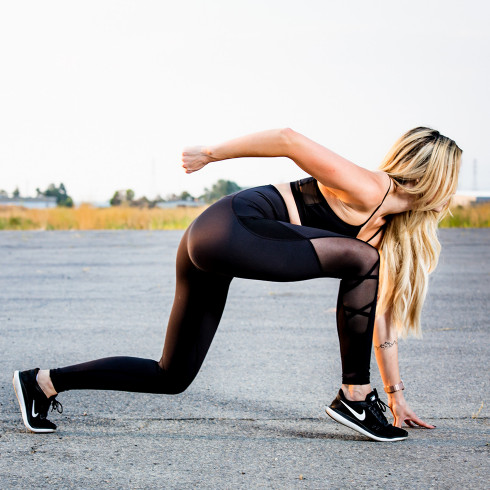 Looking thinner but at a heavier weight? Is that possible?04/10/2021Posted in: Our tipsAdvertising has shaped our thinking! We have been forced for years to believe that losing weight is the key to having...Read more
Looking thinner but at a heavier weight? Is that possible?04/10/2021Posted in: Our tipsAdvertising has shaped our thinking! We have been forced for years to believe that losing weight is the key to having...Read more -
 10 Expert Tips to Maximize the Effectiveness of Creatine26/08/2024Posted in: Our tipsThis article presents ten tips to maximize the effectiveness of creatine. It emphasizes the importance of choosing...Read more
10 Expert Tips to Maximize the Effectiveness of Creatine26/08/2024Posted in: Our tipsThis article presents ten tips to maximize the effectiveness of creatine. It emphasizes the importance of choosing...Read more -
 10 BENEFITS OF GLUTAMINE.02/01/2024Posted in: Our tipsDiscover the power of L-glutamine, an underrated superhero in the world of amino acids! Essential for revitalizing...Read more
10 BENEFITS OF GLUTAMINE.02/01/2024Posted in: Our tipsDiscover the power of L-glutamine, an underrated superhero in the world of amino acids! Essential for revitalizing...Read more -
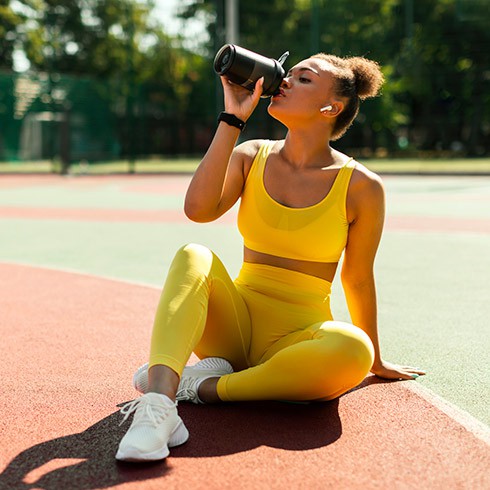 Proteins for weight loss !29/12/2023Posted in: Our tipsDive into the fascinating world of proteins and their key role in weight loss. Discover how to choose the best...Read more
Proteins for weight loss !29/12/2023Posted in: Our tipsDive into the fascinating world of proteins and their key role in weight loss. Discover how to choose the best...Read more -
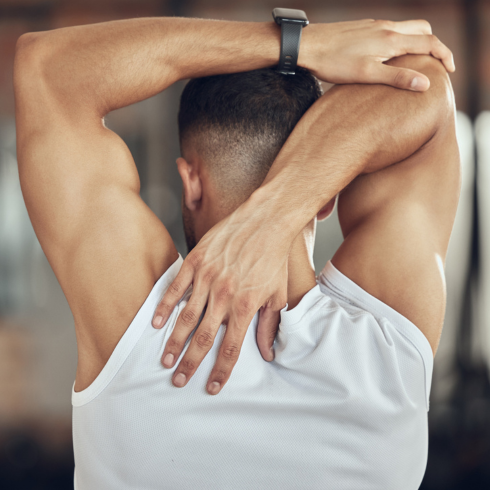 The advantages and disadvantages of sports and competitive sports.28/08/2024Posted in: Our tipsExplore ways to prevent the demanding aspects of competitive sports by adopting preventive and management practices....Read more
The advantages and disadvantages of sports and competitive sports.28/08/2024Posted in: Our tipsExplore ways to prevent the demanding aspects of competitive sports by adopting preventive and management practices....Read more
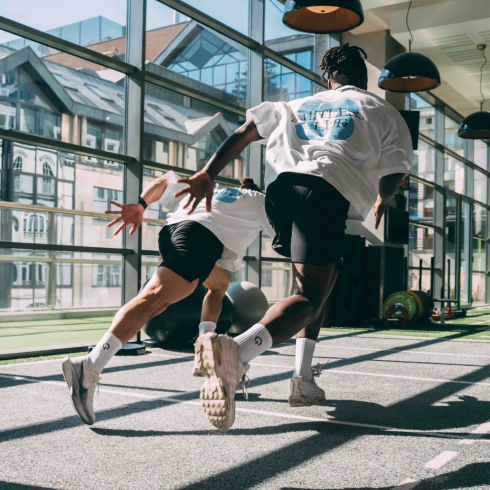
.jpg)
